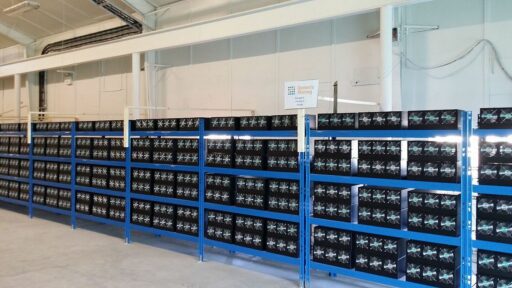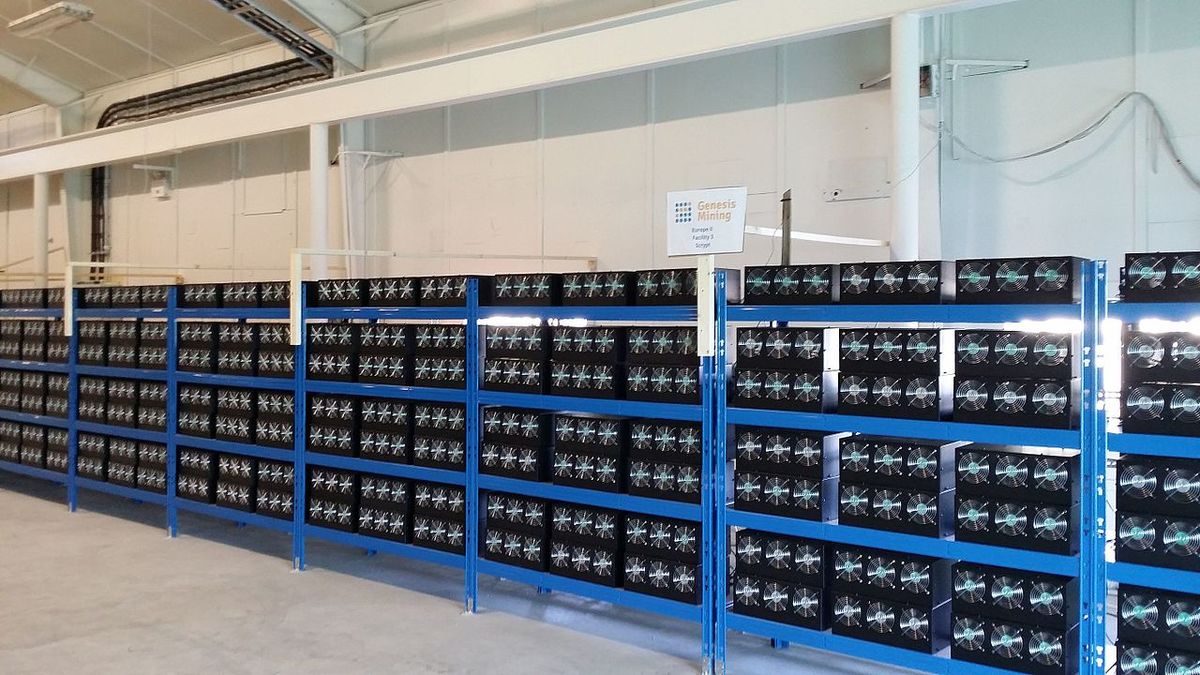As we delve into 2024, the crypto-mining landscape presents a myriad of opportunities for those willing to navigate its complexities. This article offers critical insights into the most profitable strategies for crypto mining, evaluating market trends, technological advancements, and the best coins to mine for optimal returns. Understanding these elements is essential for anyone looking to unlock wealth through crypto mining.
Key Takeaways
- Market trends and technological advancements are pivotal in assessing the profitability of crypto mining in 2024.
- Optimizing mining operations with the right hardware, software, and renewable energy sources can maximize returns.
- Selecting the best coins to mine requires analyzing performance, network difficulty, and diversifying mining portfolios.
- Understanding the financial and tax implications of crypto mining is crucial for long-term sustainability.
- Staying informed and compliant with global and local regulations is essential for mitigating legal risks in mining ventures.
Assessing the Profitability of Crypto Mining in 2024


Understanding Market Trends and Future Predictions
In the dynamic world of cryptocurrency, staying informed about market trends is crucial for miners seeking profitability in 2024. The ability to predict and adapt to market movements can mean the difference between a lucrative mining operation and one that struggles to break even.
Crypto mining calculators have become indispensable tools for miners. They help in evaluating the potential profitability of different cryptocurrencies by considering factors such as electricity costs, market conditions, and mining rewards. Here’s a simple breakdown of how these factors can influence your mining strategy:
- Electricity Costs: A significant expense that can erode profits.
- Market Conditions: Volatility can affect the value of rewards.
- Mining Rewards: Changes in block rewards impact earnings.
It’s essential to remain adaptable and responsive to these variables to ensure the success of your mining endeavors. As the industry evolves, so too must your strategies. By doing so, you position yourself to capitalize on the opportunities that arise within this ever-changing landscape.
Evaluating the Impact of Technological Advancements
The profitability of crypto mining is significantly influenced by technological advancements. As miners seek to remain competitive, they must continuously assess and integrate new technologies into their operations. This includes not only hardware improvements but also software enhancements that can lead to more efficient mining processes.
- Upgrade Hardware: Regularly evaluate the latest mining equipment to ensure optimal performance.
- Optimize Software: Implement software updates and algorithms that maximize hash rates.
- Manage Electricity Costs: Seek out renewable energy sources and negotiate better utility rates.
- Remote Monitoring: Utilize tools for overseeing mining activities from afar.
Technological advancements are not just about keeping up with the competition; they are about setting new benchmarks in efficiency and cost-effectiveness. By embracing innovation, miners can significantly reduce operational costs and increase their profit margins.
Staying ahead of the curve requires miners to be proactive in their approach to technology. Those who are slow to adapt may find themselves outpaced by more agile competitors. It’s essential to monitor market trends and evaluate the impact of technological advancements regularly to ensure long-term profitability.
Analyzing Energy Consumption and Cost Efficiency
In the dynamic landscape of crypto mining, energy consumption and cost efficiency are pivotal factors that determine the viability of mining operations. With the advent of more energy-efficient miners, those in the US are less likely to be impacted by market fluctuations, such as the anticipated Bitcoin halving in 2024.
To remain competitive and profitable, miners must adopt strategies that reduce electricity costs and optimize energy usage. This includes investing in the latest hardware, exploring renewable energy options, and implementing remote monitoring systems.
Here are some key considerations for energy and cost management:
- Invest in Energy-Efficient Hardware: Upgrading to the latest mining technology can lead to significant energy savings.
- Renewable Energy Sources: Solar panels, wind turbines, and hydroelectric power are becoming increasingly popular to reduce carbon footprints and operational costs.
- Negotiate Utility Rates: Engage with utility providers to secure better electricity pricing.
- Remote Monitoring: Utilize software tools for efficient management of mining operations.
Understanding the balance between energy consumption and operational costs will be crucial for miners, especially in light of the upcoming Bitcoin halving event.
Optimizing Mining Operations for Maximum Returns


Selecting the Right Hardware and Software
The cornerstone of profitable crypto mining lies in the selection of optimal hardware and software. ASIC miners have emerged as the industry standard due to their superior efficiency and hashing power. When choosing hardware, it’s crucial to strike a balance between cost, power consumption, and hash rate to ensure maximum profitability.
To complement your hardware, selecting the right mining software is equally important. Titles like CGMiner and Awesome Miner are frequently mentioned among the Best Bitcoin Mining Software of 2024 by Forbes. These software solutions offer robust features and compatibility with various mining hardware.
Configuring your mining rig correctly is a vital step in the mining process. It involves setting up a Bitcoin wallet, joining a mining pool, and optimizing your system for peak performance. Remember, a mining pool can significantly increase your chances of earning rewards.
It’s essential to consider the long-term operational costs and the potential for value appreciation of the cryptocurrencies you choose to mine.
Lastly, ensure that your electrical systems are upgraded to handle the energy demands safely, and don’t forget to implement adequate cooling and ventilation to manage the heat generated by your mining setup.
Strategies for Effective Hash Rate Maximization
Maximizing hash rate ROI is essential for long-term success in Bitcoin mining. By considering the cost of equipment and energy, choosing the right mining pool, and optimizing hardware efficiency, miners can significantly improve their chances of earning rewards.
To achieve effective hash rate maximization, consider the following steps:
- Select the Right Hardware: Invest in ASIC miners for their superior efficiency. Balance the cost, power consumption, and hash rate to find the best option for your setup.
- Join a Mining Pool: Pooling your hash power with other miners can increase the likelihood of earning rewards, which are then distributed among pool members.
- Optimize for Efficiency: Keep abreast of the latest developments in mining technology and upgrade your equipment as needed to stay competitive.
Higher hash rates increase the chances of earning rewards but also escalate the difficulty level, making mining more challenging for those with lower computational power.
Remember, as the overall network hash rate increases, the difficulty level adjusts, which can impact profitability. Regular assessment and adaptation of your mining strategy are crucial.
Leveraging Renewable Energy Sources
The shift towards renewable energy sources is a transformative trend in crypto mining. By harnessing solar panels, wind turbines, and other sustainable technologies, miners can significantly reduce their electricity costs—one of the largest expenses in mining operations. This not only enhances profitability but also aligns with global sustainability efforts.
Efficiency in crypto mining is key for sustainability and profitability.
Adopting renewable energy is not just about cost savings; it’s also about future-proofing the mining business against regulatory changes and increasing societal demand for green practices. Here are some steps to consider:
- Assess Energy Requirements: Calculate the energy consumption of your mining setup to determine the feasibility of switching to renewable sources.
- Explore Incentives: Many regions offer tax credits, rebates, or other incentives for using renewable energy.
- Plan for Scalability: Ensure that your renewable energy solution can grow with your mining operation.
Innovations such as liquid immersion cooling technologies have further reduced the energy required for cooling mining equipment, which is a substantial part of a mining operation’s energy consumption.
Navigating the Best Coins to Mine for Optimal Profit


Analyzing the Top Performing Cryptocurrencies
To capitalize on crypto mining, it’s crucial to identify the most profitable cryptocurrencies to mine. This involves a thorough analysis of market performance, historical returns, and the potential for future appreciation.
- Historically, Bitcoin and Ethereum have been solid choices, with Bitcoin offering substantial price appreciation since its inception and Ethereum benefiting from the rise of DeFi.
- Newer cryptocurrencies, such as Dogecoin20 ($DOGE20), are also emerging as profitable options, offering incentives like over 2,000% staking rewards.
It’s essential to consider not just the current profitability but also the long-term potential and stability of the cryptocurrency. Volatility can be a double-edged sword, providing high returns but also posing significant risks.
While the top coins by market capitalization are often the go-to for profitability, it’s worth exploring presale opportunities and other assets that may not be as well-known but have the potential for high returns.
Understanding Network Difficulty and Block Rewards
The profitability of crypto mining is heavily influenced by network difficulty and block rewards. Network difficulty is a measure that reflects how hard it is to mine a new block. As more miners compete for rewards, the difficulty increases, reducing the likelihood of successful mining for each participant. This self-adjusting mechanism ensures a steady rate of block creation across the network, maintaining the blockchain’s integrity.
Block rewards are the incentives given to miners for validating transactions and securing the blockchain. These rewards, which typically consist of newly minted coins and transaction fees, are the primary source of income for miners. However, factors such as halving events can significantly alter reward structures, affecting miners’ profitability.
It’s crucial for miners to stay informed about network difficulty adjustments and anticipate halving events to strategize their mining operations effectively.
Understanding these concepts is essential for optimizing mining efforts and ensuring long-term profitability. Here’s a quick overview of how these factors interplay:
- Market value: Affects the potential profit from mined coins.
- Mining difficulty: Higher difficulty necessitates more powerful hardware and increases operational costs.
- Block rewards: Determine the direct earnings from mining activities.
By carefully monitoring these elements, miners can make informed decisions about which cryptocurrencies to mine and when to adjust their strategies.
Diversifying Mining Portfolios for Risk Management
In the dynamic world of crypto mining, diversifying your mining portfolio is a critical strategy for managing risks and enhancing profitability. By mining a variety of cryptocurrencies, you can mitigate the impact of price volatility and network difficulty changes. A well-balanced portfolio can help stabilize your mining income, even when individual coins experience fluctuations.
Effective risk management extends beyond diversification. It’s essential to employ tools like stop-loss orders and to stay informed on market trends. This proactive approach allows miners to adjust their strategies in response to market movements, ensuring they remain competitive and profitable. Budgeting is also a key component; by allocating funds wisely and optimizing your mining environment, you can maximize returns while keeping expenses in check.
Embracing a comprehensive risk management strategy is not just about protecting your investments; it’s about positioning yourself for long-term success in the crypto mining industry.
Financial Insights and Tax Implications of Crypto Mining


Navigating Cryptocurrency Taxation Laws
Understanding the tax implications of crypto mining is crucial for maintaining profitability and legal compliance. Tax regulations for cryptocurrency can vary significantly by jurisdiction, and staying informed is essential for miners. Here are some key considerations:
- Record-keeping: Maintain detailed records of all mining activities, including expenses, income, and the fair market value of mined coins at the time of receipt.
- Taxable events: Be aware that certain events, such as selling mined coins or using them for purchases, can trigger tax obligations.
- Deductible expenses: Identify which expenses related to mining operations can be deducted, such as electricity costs, hardware depreciation, and maintenance fees.
It’s important to consult with a tax professional who specializes in cryptocurrency to ensure that all tax liabilities are accurately calculated and reported.
Additionally, miners should be proactive in adapting to changes in tax laws to avoid penalties and maximize after-tax income. Utilizing tax-advantaged strategies and structures can also be beneficial in the long run.
Accounting for Mining Expenses and Revenue
In the dynamic world of crypto mining, accurate accounting is the bedrock of financial sustainability. Property owners and miners must maintain meticulous records of their mining activities. This includes the dates of mining, the quantity of cryptocurrency mined, its value at the time, and any subsequent sales. Such detailed logs are indispensable for precise tax reporting and financial analysis.
When venturing into the mining space, initial setup and ongoing expenses are significant. The table below outlines the primary costs associated with starting and maintaining a mining operation:
| Expense Category | Description |
|---|---|
| Capital Investment | Costs for purchasing mining hardware like ASICs or GPUs. |
| Operational Costs | Electricity, cooling, maintenance, and internet connectivity. |
Beyond the initial investment, miners face continuous expenses such as electricity for powering the rigs and cooling systems to manage the heat generated by the hardware.
Understanding the tax implications is also crucial. In many jurisdictions, mining income is taxable. For instance, the IRS considers newly mined cryptocurrency as gross income, which must be reported on tax returns. Consulting with a tax professional who specializes in cryptocurrency can help navigate these complexities.
Planning for Long-Term Financial Sustainability
Achieving long-term financial sustainability in crypto mining requires a forward-looking approach and the ability to adapt to changing market conditions. Diversification of mining activities and investments can help mitigate risks associated with market volatility and the evolving regulatory landscape.
To maintain profitability through market fluctuations, miners should consider the implications of events like the Bitcoin halving and integrate sustainability initiatives into their operations.
Efficient management of mining operations is crucial. Implementing remote monitoring and planning for expansion are key steps in ensuring operational longevity. Additionally, leveraging innovations such as liquid immersion cooling technologies can reduce energy consumption, a significant factor in mining cost efficiency.
| Aspect | Consideration |
|---|---|
| Regulatory Environment | Stay informed about changes and plan accordingly |
| Energy Consumption | Adopt sustainable energy sources |
| Market Trends | Monitor and adapt to price and demand shifts |
By focusing on these strategic areas, miners can position themselves to weather the uncertainties of the crypto market while laying the groundwork for a resilient and profitable mining enterprise.
Adapting to Regulatory Changes and Legal Considerations


Keeping Abreast with Global Crypto Regulations
In the dynamic landscape of cryptocurrency, regulatory changes are as inevitable as they are impactful. As a miner, it’s crucial to navigate these changes to ensure the legality and profitability of your operations. Here are some steps to stay updated:
- Regularly consult official government websites and legal databases for updates.
- Engage with local and international crypto communities for shared insights.
- Subscribe to newsletters from reputable sources that specialize in crypto regulation.
The regulatory environment for crypto mining in 2024 varies significantly across different countries, affecting mining operations worldwide. Some regions have embraced crypto mining, whereas others have imposed stringent regulations or outright bans.
It’s also beneficial to monitor news from regions that are key players in the crypto space, such as Hong Kong’s sandbox for stablecoin issuers or Nigeria’s recent actions against Binance executives. These events can serve as indicators of broader regulatory trends. By staying informed and agile, miners can pivot their strategies to align with the latest legal frameworks, thereby safeguarding their investments and ensuring continuous operation.
Ensuring Compliance with Local Laws
Ensuring compliance with local laws is a critical step in establishing and maintaining a profitable crypto mining operation. Assessing compatibility with local regulations is the first move towards a legally sound mining venture. This includes evaluating your property for suitability, such as space, ventilation, and electrical capacity, often with basements or garages being ideal locations.
It’s essential to understand the legal framework specific to your region. Check local zoning laws and ensure that running a mining operation is permissible. Review your insurance policy to comprehend coverage implications.
The regulatory environment for crypto mining can vary significantly across countries, which affects operations globally. Some regions have embraced crypto mining, while others have stringent regulations or outright bans. Here’s a list of steps to ensure compliance:
- Review and adhere to the legal framework and zoning laws.
- Understand the implications of mining on your insurance coverage.
- Implement solutions like soundproofing and advanced cooling to address local concerns.
- Maintain transparent communication with any tenants or neighbors.
Non-compliance can lead to severe legal consequences, including fines or the shutdown of operations. Therefore, staying informed and proactive about legal requirements is not just a matter of due diligence, but a strategic imperative for the longevity and profitability of your mining activities.
Mitigating Legal Risks in Crypto Mining Ventures
To ensure the longevity and legality of crypto mining operations, miners must be vigilant in mitigating legal risks. This involves a multifaceted approach that includes staying informed about the latest regulatory changes, seeking legal counsel, and adhering to best practices in compliance.
- Stay Informed: Regularly update your knowledge on global and local crypto regulations.
- Legal Counsel: Engage with legal experts to navigate the complex legal landscape.
- Compliance: Implement robust compliance procedures to adhere to laws and regulations.
- Documentation: Maintain thorough records of all mining activities and transactions.
By proactively addressing legal considerations and ensuring compliance, miners can protect their operations from potential legal challenges and penalties.
Understanding the importance of these measures is crucial for any miner looking to sustain a profitable and lawful enterprise. The landscape of crypto mining is ever-evolving, with decentralization and market trends playing a significant role in shaping the industry’s future.
Conclusion
In summary, the journey to profitable crypto mining in 2024 is one of strategic navigation through a rapidly evolving landscape. Success hinges on a miner’s ability to select the most lucrative coins, leverage cutting-edge technology, and optimize operations for energy efficiency. While challenges such as fluctuating hash rates and market trends persist, the opportunities for substantial rewards remain for those willing to invest the necessary effort and resources. As we continue to witness technological advancements and economic shifts, the crypto mining industry offers a promising avenue for savvy investors and miners to potentially reap significant profits.
Frequently Asked Questions
What factors influence crypto mining profitability in 2024?
In 2024, crypto mining profitability is influenced by factors such as hash rate, difficulty level, market trends, technological advancements, and energy consumption costs.
How can I select the best coins to mine for profitability in 2024?
To select the best coins for mining profitability in 2024, analyze the top performing cryptocurrencies, understand network difficulty and block rewards, and diversify your mining portfolio to manage risk.
What technological advancements are impacting crypto mining in 2024?
Technological advancements impacting crypto mining in 2024 include improvements in mining hardware efficiency, software optimization, and the integration of renewable energy sources.
How does energy consumption affect crypto mining profitability?
Energy consumption directly affects crypto mining profitability as lower energy costs can lead to higher net returns, while high energy costs can diminish profits.
What are the financial insights and tax implications of crypto mining?
Financial insights include accounting for mining expenses and revenue, while tax implications involve navigating cryptocurrency taxation laws and planning for long-term financial sustainability.
How do regulatory changes and legal considerations affect crypto mining?
Regulatory changes and legal considerations can significantly affect crypto mining by imposing compliance requirements, affecting operational legality, and potentially introducing new risks.






